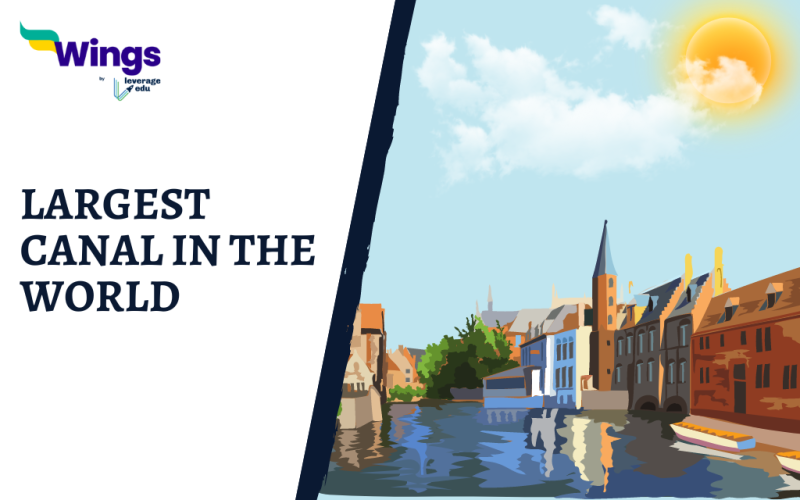The largest canal in the world is the Jing-Hang Grand Canal in China. It is a UNESCO World Heritage Site and is the world’s longest artificial waterway. Stretching over 1,776 kilometers, it’s a network of canals connecting major rivers in northern and eastern China. The canal served as an important transportation route during medieval and premodern times, linking the north and south. Let’s hop on to learn everything about the largest canal in the world
Table of Contents [show]
Basic Information about Grand Canal
The Grand Canal is divided into six sections, including the Jiangnan Canal which runs from Hangzhou to Zhenjiang, and the Northern Canal which reaches all the way to Beijing. It passes through several provinces and municipalities, showcasing China’s rich history and engineering marvel.
| Section Name | Location |
| Jiangnan Canal | Hangzhou to Zhenjiang |
| Inner Canal | Yangzhou to Huai’an |
| Middle Canal | Huai’an to Nansi Lakes |
| Lu Canal | Nansi Lakes to Linqing |
| Southern Canal | Linqing to Tianjin |
| Northern Canal | Tianjin to Tongzhou (near Beijing) |
| Eastern Zhejiang Canal (added in 2014) | Hangzhou to Ningbo |
Also Read- What is the Full Form of UNESCO?
History of Grand Canal
The Grand Canal boasts a long and storied history. The earliest sections date back to 468 BC, with significant expansions occurring in 221 BC and under the Sui Dynasty (581 onwards). Emperor Yang of the Sui Dynasty oversaw a massive construction project that included four new canals alongside the existing one. This brutal endeavor, relying on forced labor from millions of slaves and criminals, resulted in a tragic loss of life.
Also Read- UNESCO World Heritage Site
The Yuan Dynasty (1271-1368) further extended the canal by 47 miles, aiming to improve grain transportation to their capital, Beijing. This project again involved a large workforce over a decade. The Grand Canal remained a vital waterway for centuries, but its fortunes changed in the 19th century. Floods, political unrest, and the rise of alternative transport options like railways led to the canal’s decline, particularly in the north.
Also Read- World Heritage Day 2024: History, Theme, Significance
Facts About Grand Canal
Now let’s find out some of the best facts about the grand canal.
- Stretching over 1,100 miles or 1,800 kilometers, the Grand Canal is the world’s longest artificial waterway. While some parts follow natural rivers, other sections are entirely man-made.
- Construction of the Grand Canal began in sections during the Sui Dynasty (581-618 AD). It wasn’t until the Yuan Dynasty (1271-1368 AD) that the entire network connecting Beijing to Hangzhou was completed.
- The Grand Canal served as a crucial transportation route for essential goods like grain, salt, and other resources. It linked the fertile agricultural south to the population centers of the north.
- The canal features impressive feats of engineering, like pound locks invented during the Song Dynasty (960-1279 AD) to manage water level differences.
- Beyond its economic importance, the Grand Canal has been able to take part in cultural exchange between north and south. It also facilitated the development of unique artistic traditions along its banks.
FAQ
No! However, the Suez Canal is the largest man-made canal in the world.
The longest canal in India is the Indira Gandhi Canal.
No! However, the Panama and Suez canals are the two most important canals for international shipping lanes.
With this, we come to the end of the largest canal in the world. For more such content, visit our general knowledge page.
 One app for all your study abroad needs
One app for all your study abroad needs















 45,000+ students trusted us with their dreams. Take the first step today!
45,000+ students trusted us with their dreams. Take the first step today!
